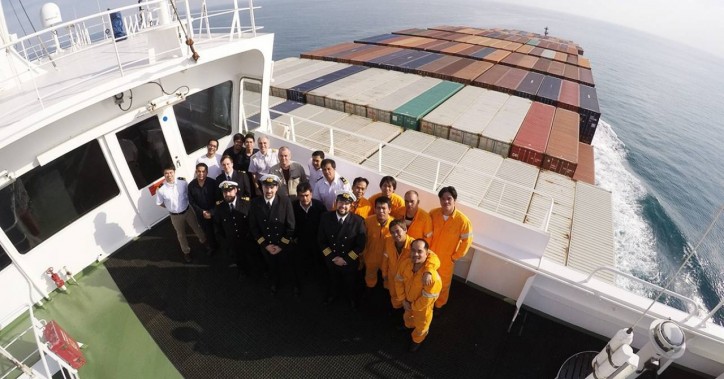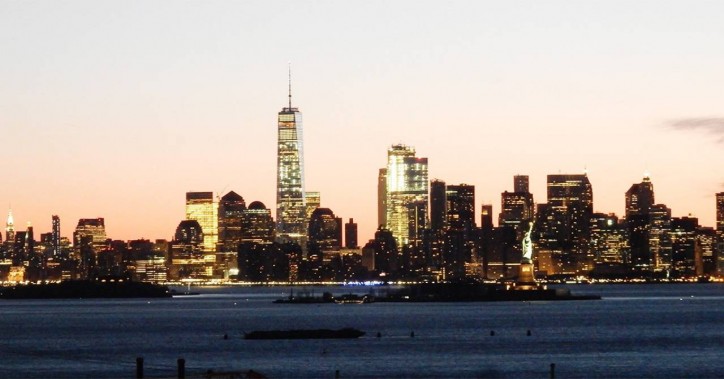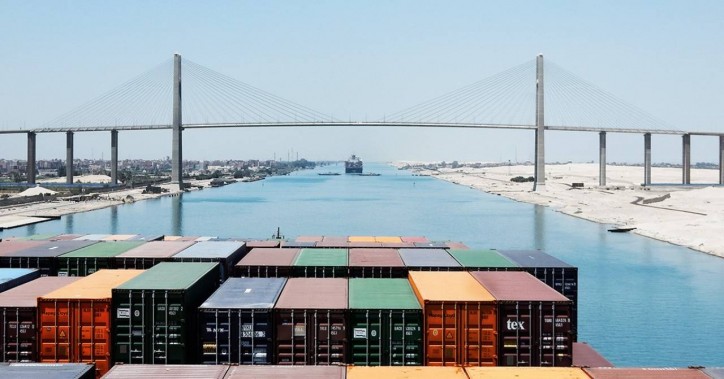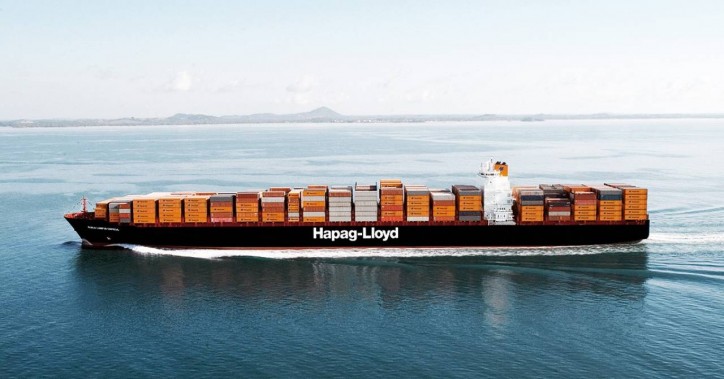Jules Verne described the voyage in his novel Around the World in Eighty Days. And a small number of yachtsmen still brave it today. However, container ship sailors, at least at Hapag-Lloyd, are nearly always deployed on liner services – on round trips with a fixed timetable. Very rarely does it happen that a crew can go on a voyage like this with their ship – around the world, across all three oceans. The crew of the “Chicago Express” is now among them. By the time it docked again at CTA in Hamburg on 6 June, the 8,750-TEU Hapag-Lloyd ship had covered a total of 28,500 nautical miles: around the world in 90 days.
The sailors were thus a little slower than the British eccentric Phileas Fogg and his valet Passepartout in Vernes’ story in 1873. However, they had chosen the more agreeable direction for a world tour – namely westwards, meaning that they continually set their clocks back and were often able to sleep an hour longer at night.
“And luckily I didn’t win this assignment as part of a bet,” says Alexander Meier, the captain of the “Chicago Express”, who knows the novel, of course.

In all, eleven of the 21 sailors on board undertook the entire journey. It was by no means certain that the 336-meter ship, which was built in 2006, would circumnavigate the world when it set off from Hamburg in early March. The original plan was to sail across the North Atlantic on the AX1 service and then collect empty containers for Asia, where the ship was to be deployed on the FE5 service between Europe and Asia for the new THE Alliance. However, instead of using the Suez Canal route, a fuel stop in eastern Russia was added. The ship sailed there “the other way around” through the Panama Canal and across the Pacific, resulting in a world tour.
On the journey, The Crew experienced the diversity the earth has to offer – particularly with the weather: first on the North Atlantic, with seven depressions in four days, ending with Storm Stella. The latter brought eight-meter waves and force ten winds on the North Atlantic, while also disrupting the sequence of ports on the US east coast. By contrast, 26 degrees in the Gulf of Thailand, with glass-like seas and a few fluffy clouds – perfect weather for a cruise.

In between, blue skies, although sub-zero temperatures in New York. And 28 degrees in the Panama Canal. In the vast Pacific, whales, dolphins, flying fish, petrels which followed the ship for a few miles – and in Panama a pair of pigeons on board that were probably looking for a lift to Mexico. Single-digit temperatures while they bunkered in the Russian port of Nakhodka. And (as always) heat in Singapore, 32 degrees in the shade. Friendly people everywhere, particularly in Vietnam, as the captain can vouch: “The heading on official papers reads ‘Independence – Liberty – Happiness’. That says it all.” However, they crew didn’t have much time for trips ashore – in that regard, it was like a normal round-trip. The “Chicago express” remained in the northern hemisphere throughout its journey. The southernmost point of the trip was Singapore, the northernmost Hamburg.

There was only one day, 18 April, that nobody on board can remember. That particular Tuesday was lost when the ship crossed the Date Line in the Pacific. However, what the sailors do remember fondly are the many encounters with other ships from the Hapag-Lloyd fleet – half a dozen in total: in Norfolk, they met the smaller “Seoul Express”, in the Panama Canal the new “Valparaíso Express” and in Singapore the 13,200-TEU “Leverkusen Express”. The Crew useD The Three-week transit across the Pacific mainly to tidy up – to finally take care of things that had previously been put aside.
“However, the most important thing there is to keep an eye on the weather,” says Master Meier. “I receive new data every six hours and then check whether I can stay on the same course.” The “Chicago Express” had 4,101 containers, or 7,035 TEU, on board after calling at the US ports – only ten of which had cargo in them, with the rest empty. “I didn’t take the shortest route across the Pacific, as this would have made the ship more susceptible to the weather.”

The crew had already taken most of the supplies for their journey on board before they left Hamburg – a lot of frozen food and dried goods. The cook and steward filled the stores to the ceiling. On the US east coast and in Asia, the crew also bought fresh supplies. They barbecued three times on the outside deck, roasting the first suckling pig in the Windward Passage between Cuba and Haiti under the Caribbean sky with a view of the sea.
Just two days before reaching Yantian in China, they ran out of lettuce: “Salad was then made from preserved and frozen vegetables,” says the master. “A world trip like this is really something special. It was my first one,” summarises Meier.
The 39-year-old has been a master for four years and knows the “Chicago Express” from a journey as First Officer in 2012. He began his career at Hapag-Lloyd in 1996 – as an apprentice ship mechanic. And now the journey around the world:
“On round trips, you call at ports twice; however, on this trip some of them were new for the ship, and also for me.” even easTer eggs had been remembered for the world trip. Meier’s predecessor had ordered several packets of them in advance. “The Easter bunny also visited us the night before Easter and hid the eggs on board,” says the master.
The subsequent hunt went on for a few days. The problem with such a big container ship: even now, some of the bunnies and eggs have still not been found…
Source: Hapag-Lloyd